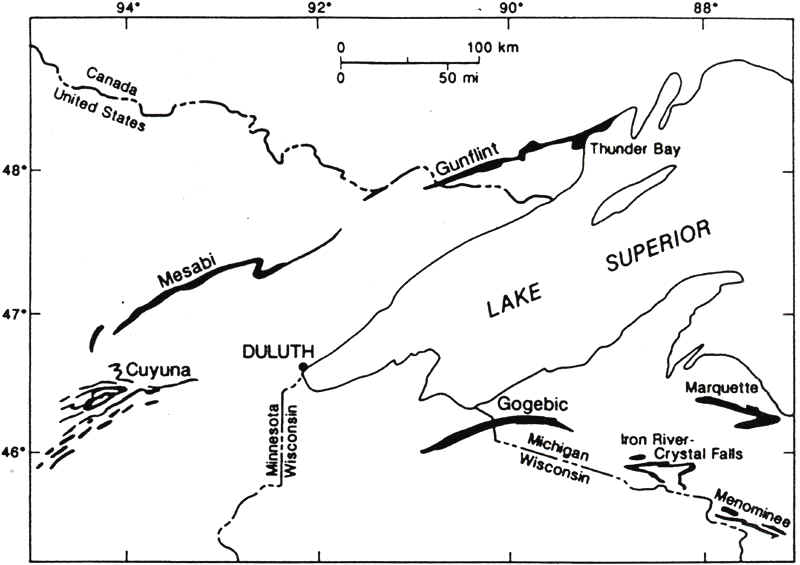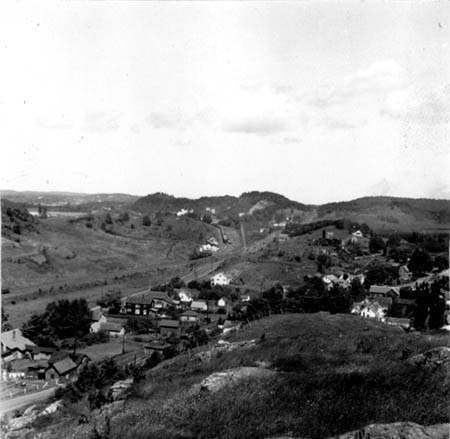MARQUETTE IRON RANGE
First to be discovered, the Marquette Range had been of interest to geologists
since the early 1840s when Douglass Houghton, Michigan's first State Geologist, conducted
a systematic scientific analysis and exploration of Michigan's Upper Peninsula. He
published his findings in a lengthy report, detailing the locations of minerals in the
Lake Superior area. Although he was not aware of the quantity of iron ore deposits in the
area, Houghton did state that iron deposits were to be found on or near the south shore of
the lake. Houghton's findings were substantiated and enlarged by the activities of William
A. Burt, a United States Deputy Surveyor. Burt, in attempting to establish the east-west
line between townships 47 North and 48 North, approximately one mile south of Teal Lake,
noted strange variations in his magnetic compass needle. When using Burt's own invention,
the solar compass, no variations were observed. Searching for the cause of this
disturbance, the surveying party discovered deposits of iron ore, or hematite. In 1845,
the search for iron ore began in earnest, and the first major discovery was made near the
present site of Negaunee. The men of the search party formed the Jackson Mining Company on
July 23, 1845, and iron mining in Michigan officially began. A producing wrought iron from
ore was erected on Carp River, and it was there that the first metallic iron was made.
The first blast furnace, built near the Jackson Mine, went into operation in April
of 1849.
The Civil War increased the need for Lake Superior iron, and the volume
of shipment began a steady increase, with additional mines opening on the range. In 1861,
the output for the Marquette Range was 120,000 tons; by 1868, annual figures had reached a
half million tons; and, by 1873, the range produced over one million tons of ore, a figure
that steadily increased through the turn of the century.



This material has been compiled for educational use only, and may not be reproduced without permission. One copy may be printed for personal use. Please contact Randall Schaetzl (soils@msu.edu) for more information or permissions.